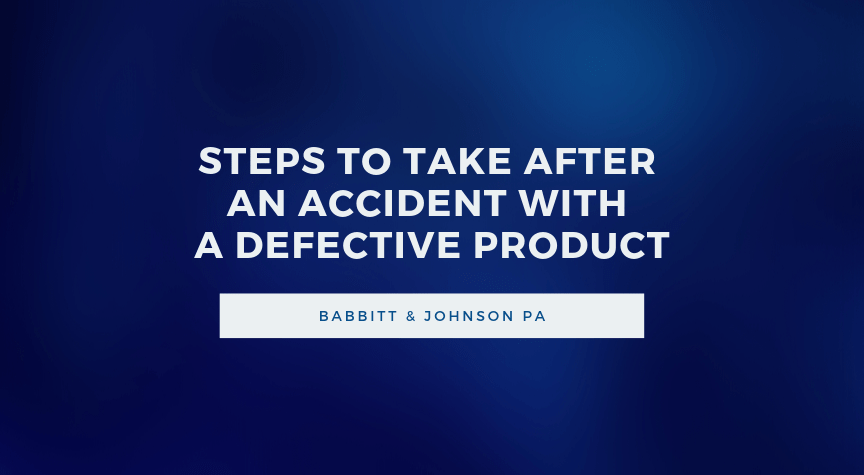From shoes and toys to household tools and supplies, virtually any product can harm you if it has manufacturing defects or you and your family weren’t adequately warned of potential dangers.
Products sold in the U.S. are supposed to meet standards put in place by the Consumer Product Safety Commission (CPSC). However, those standards only define what product safety is and let companies make recalls. They do not cover personal injury, which is usually left to individual states.
As well, product liability cases are like the defective items themselves — they come in all varieties. One claim can vary drastically from the next, making it a challenge for the average consumer to understand when they may or may not have a legitimate claim around a faulty product.
With that in mind, here are some steps to take in the event of a defective product.
- Seek medical attention.
Just like car accidents, dog bites, and other injuries where you’re not at fault, it’s important to seek medical help immediately after the accident. This is both for the sake of your own health and to document your injuries. Evidence matters in product liability claims, so retain records of your doctor or hospital visits, follow-up care instructions, and medications, as they will most likely be used to make your claim. Carefully adhere to any follow-up care or medications prescribed by the doctor. If you deviate from these, it could affect your ability to press a successful claim. - Preserve the product.
Do not throw the product out, even if it’s small or the damage is minimal. You will need the item to prove it caused the injury in order to make a successful claim.
Because product manufacturers go to great lengths to fight defective product lawsuits, it is critical that the attorney handling your claim first have the product examined by an expert to determine the cause of failure. This establishes that your injury was caused by a defective product and not something else (e.g., a “user error”), and that you have a legitimate claim to bring against the manufacturer.
- Avoid writing reviews or social media posts about the product.
While your case is open, avoid posting text or pictures about the accident to your social media accounts, blogs, or any other online forum. That includes product review sites.
The reason for this is that some of that information could be available to the public and therefore at risk to be used negatively against you in your case. As a general rule of thumb, do not discuss the case or the accident with anyone without your attorney’s consent.
- Get an attorney who specializes in defective product litigation.
As mentioned above, product liability cases are tricky, varying not just from state to state but from product to product. Litigation around a car that injured you will not be handled in the same way as the case of toy that hurt your child.
To ensure you get the best possible representation when making your claim, find an attorney who specializes in defective product litigation. They will understand the nuances of this area of law and also have experience going up against the teams of lawyers the product manufacturer will no doubt bring when you make a claim.
Fighting for individuals in cases of product negligence has been a big part of Babbitt & Johnson P.A.’s practice since the beginning. We have taken on everything from auto accidents to major corporations, winning our clients millions of dollars in compensation for another company’s negligence. If a product accident has injured you or a loved one, reach out to us today to discuss your options.
